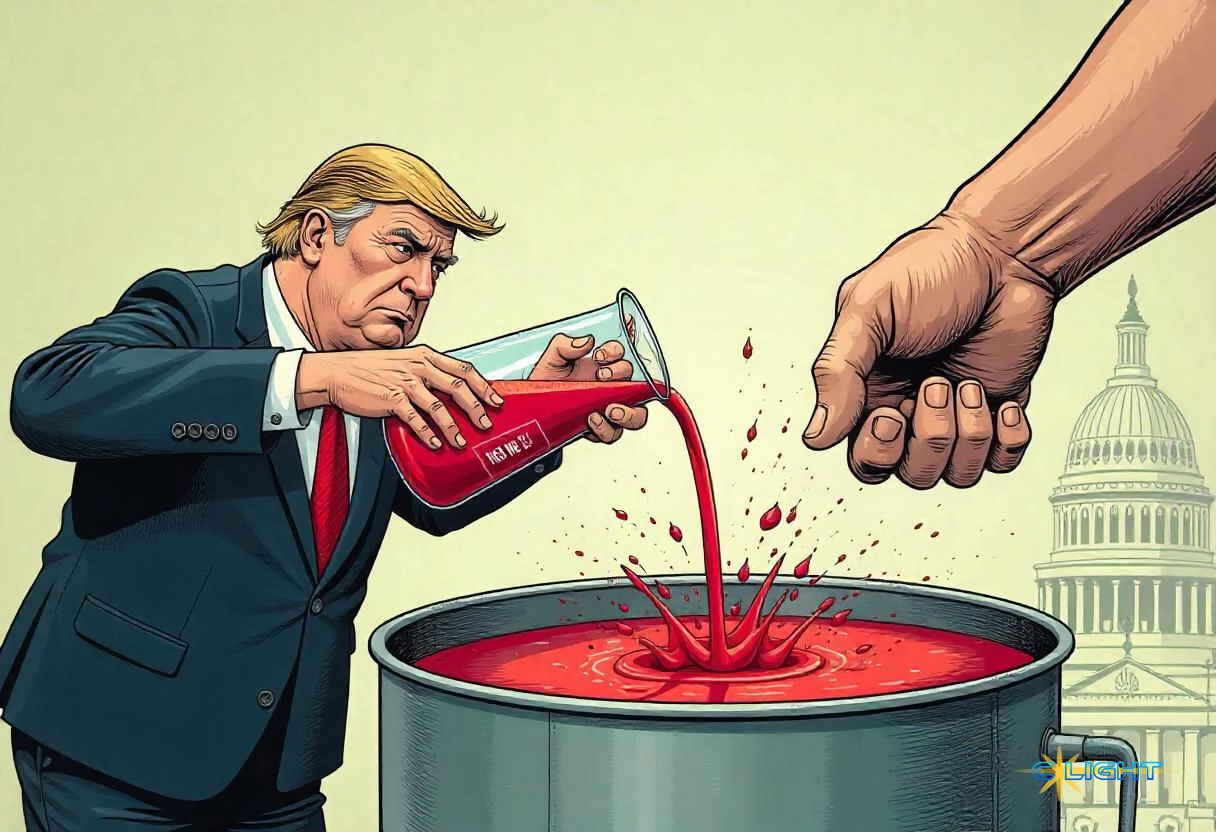Gather ‘round and witness a miracle of modern capitalism. In a stunning, apparently spontaneous wave of corporate enlightenment, the giants of the American food industry have all, at once, discovered a newfound and passionate concern for the well-being of our children. Kraft Heinz, General Mills, Nestlé, Conagra, Tyson, PepsiCo—one by one, they have bravely stepped forward to announce that they will be phasing out the synthetic, petroleum-based food dyes that have made their products glow with an otherworldly luminescence for generations.
It’s a touching scene. One could almost be moved to applause, were it not for one glaring, inconvenient fact: this entire act is, to put it mildly, total and complete bullshit.
This isn’t a story about corporate responsibility. It’s a story about corporate panic. This sudden, industry-wide conversion was not sparked by a change of heart in the boardroom; it was sparked by a political firebrand in Washington. HHS Secretary Robert F. Kennedy Jr., as part of his populist “Make America Healthy Again” campaign, has described these dyes as “poison” and has made it clear that this is just the first battle in a much larger war. “We are going to get rid of the dyes,” he declared recently, “and then one by one, we’re going to get rid of every ingredient and additive in food that we can legally address.”
Faced with this threat, the Goliaths of Big Food are suddenly cowering, hoping a public display of compliance will spare them from further wrath. Their press releases speak of a “journey” to meet “evolving consumer preferences.” It’s a lovely narrative.
Before we thank them for their journey, however, it’s worth asking a simple question: what have their European divisions been selling for the last decade? Many of the exact same dyes—the Reds, the Yellows, the Blues—that are just now being “phased out” in the U.S. have been against the law across Europe for years due to health concerns. The very same companies currently moaning about the “burden” of adapting their recipes have been successfully selling dye-free versions of their products to European children for ages. This isn’t a surprise to them. It’s not a complex reformulation challenge. It’s just finally being forced to sell Americans the same, safer products they’ve already been selling to everyone else.

The entire premise for using these dyes in the first place is built on a cynical fallacy that the industry itself created. For decades, they have marketed the idea that children will only eat food that looks like it was fished from a radioactive swamp. The color, they implicitly argued, was essential. This conveniently ignores the beige-colored, multi-billion-dollar elephant in the room: Cheerios.
As any parent who has ever raised a child will tell you, color doesn’t matter. Taste does. No toddler has ever turned down a Cheerio because it wasn’t neon green. The truth is, the dyes were never for the kids; they were for the companies. They are a cheap and easy way to make processed ingredients look more appealing and to create a brand identity that has absolutely nothing to do with nutrition or flavor. They know what they need to do to make food taste good, but if they mess with the tried-and-true, chemically-enhanced recipes, they know the kids will notice. And a parent whose child rejects a new, “healthier” version of a product will only throw that box of cereal away once before never buying it again.
This isn’t just a federal push. The pressure is coming from all sides. A groundswell of state-level action is making the status quo untenable. California and West Virginia have passed their own bans. Texas, in a stroke of legislative genius, will now require a “shame label” on products containing these dyes, informing customers that the ingredients are “not recommended for human consumption” in other developed nations. Add to this the fact that an AP-NORC poll found two-thirds of Americans want these additives gone, and the writing isn’t just on the wall; it’s on a massive, flaming billboard.

Of course, the industry’s official lobbying arm, the Consumer Brands Association, is still dutifully reading from the old script, insisting that all their ingredients have been “rigorously studied” and “demonstrated to be safe.” It is the predictable, hollow defense of an industry caught with its hand in the chemical cookie jar.
So, when you see the new, paler versions of Kool-Aid and Jell-O appearing on the shelves over the next year, don’t send a thank you note to the corporate headquarters. This change didn’t happen because of a sudden attack of conscience. It happened because they were dragged, kicking and screaming, into the 21st century by a combination of populist political pressure, clever state legislation, and overwhelming public demand. They are not heroes on a nutritional “journey.” They are simply, and finally, getting caught.
Discover more from Clight Morning Analysis
Subscribe to get the latest posts sent to your email.










